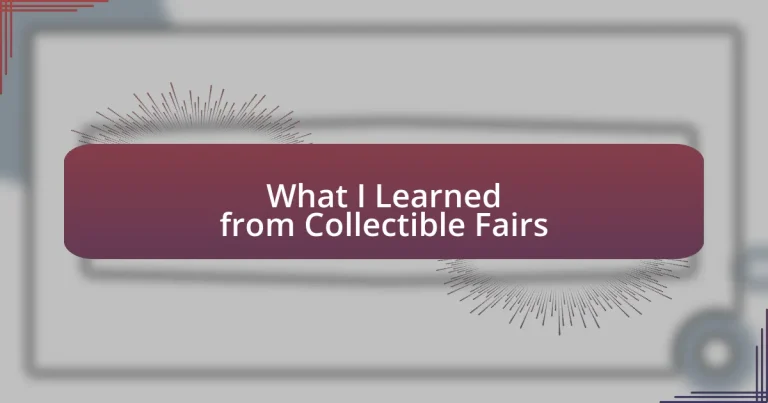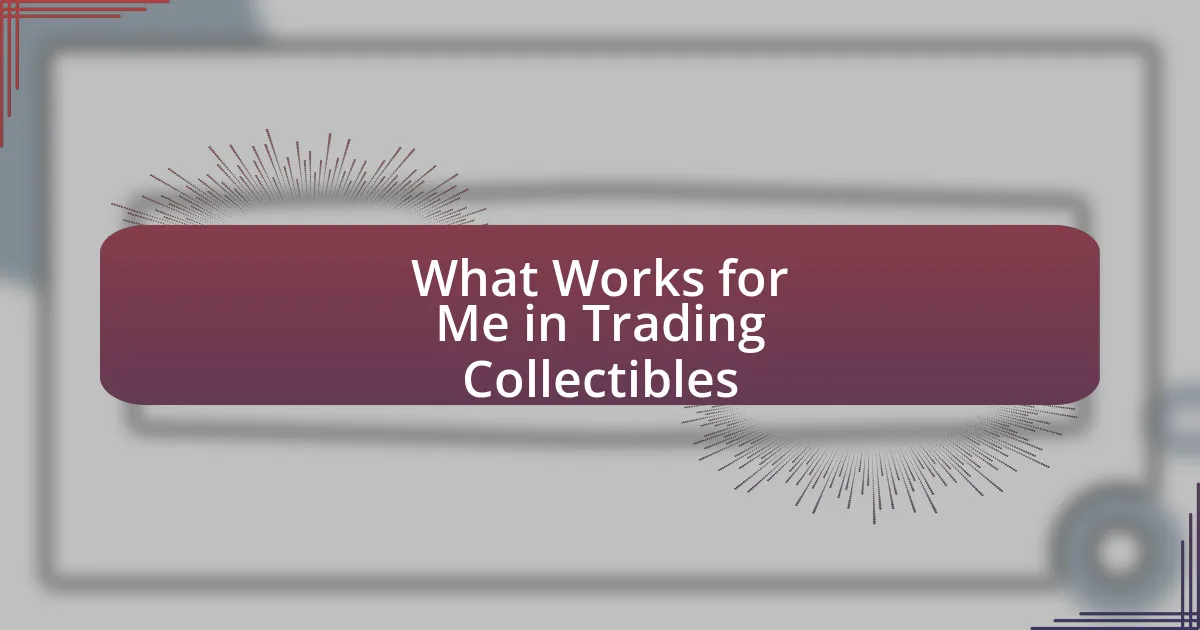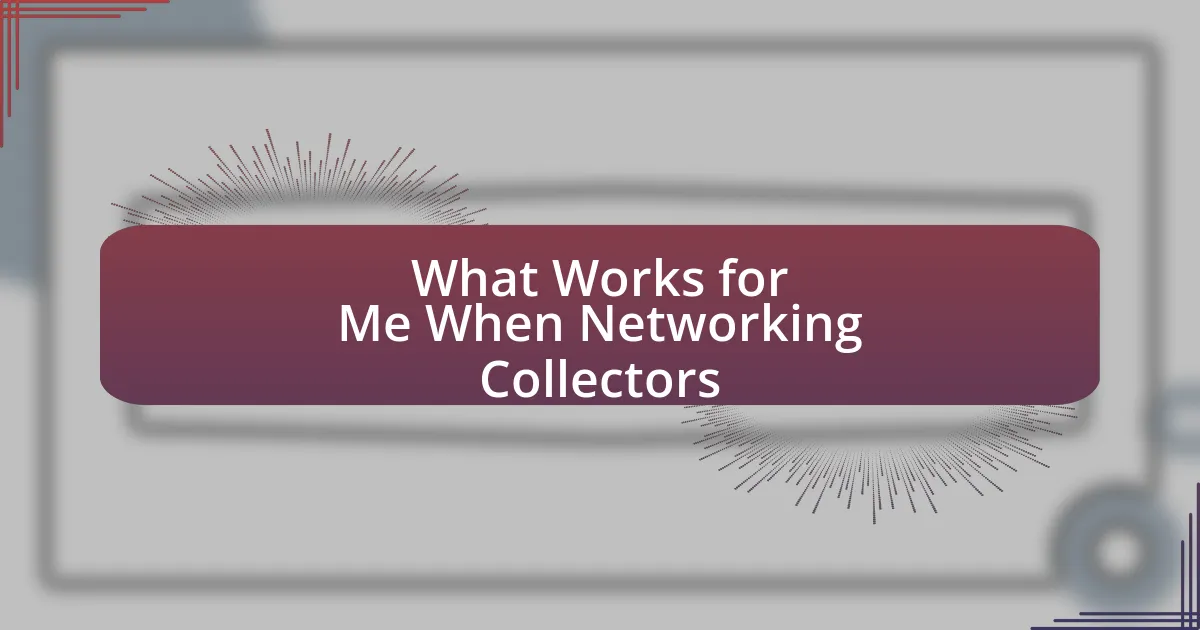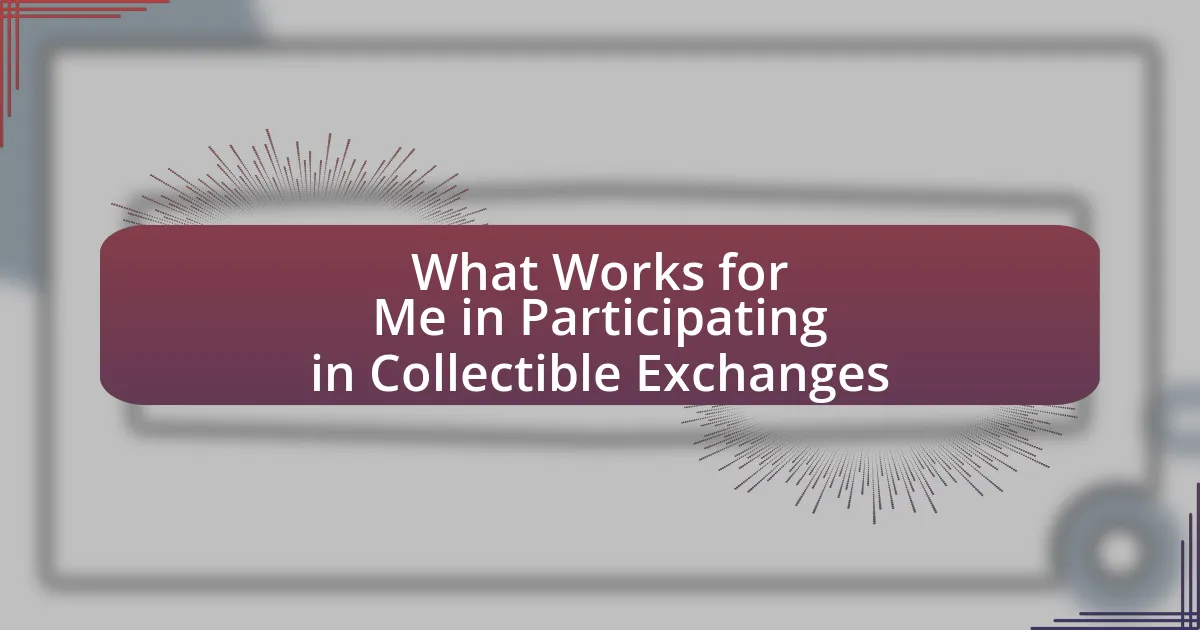Key takeaways:
- Collectible fairs foster personal connections, nostalgia, and storytelling among attendees and vendors.
- Understanding collectible condition is crucial for value assessment; imperfections can add character.
- Effective negotiation involves setting a budget, making the first offer, and building friendly rapport with sellers.
- Market trends are influenced by nostalgia and pop culture, highlighting the evolving nature of collectible value.
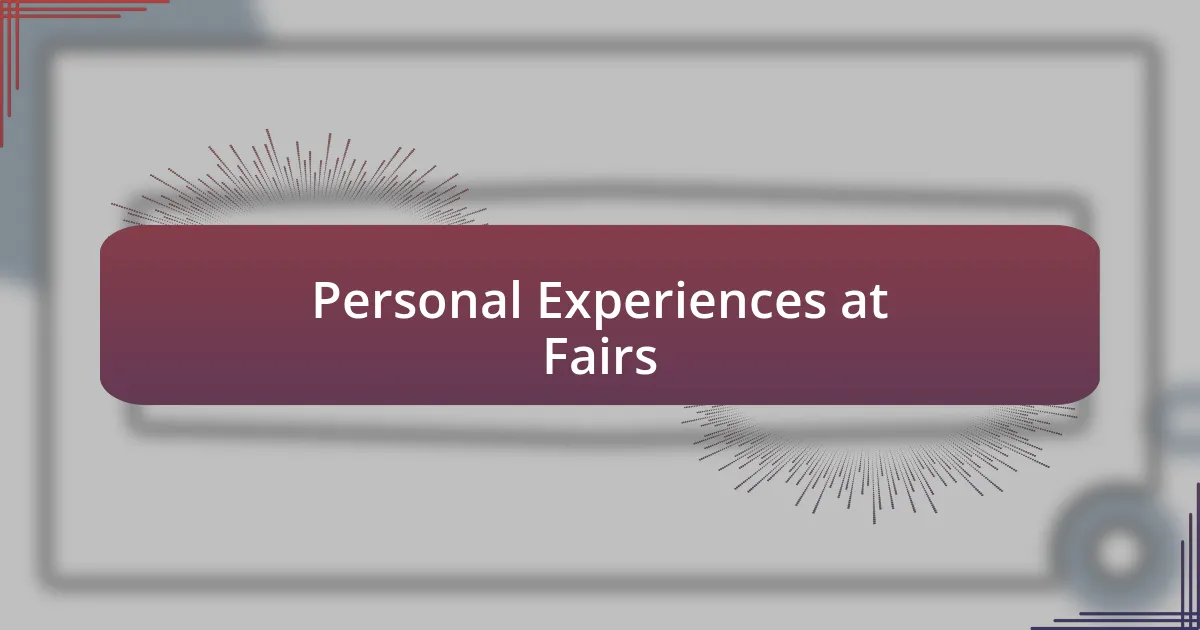
Personal Experiences at Fairs
Visiting collectible fairs has been a journey of discovery for me. One memorable experience involved finding a rare vinyl of a favorite band. The thrill of unearthing that treasure in a sea of records was palpable, making me appreciate not just the item, but also the story behind it.
There was this one time I struck up a conversation with a vendor who had an impressive collection of vintage toys. As we chatted, he shared tales from his childhood, which mirrored my own nostalgia. How often do we encounter pieces that connect us to our past? That moment made me realize that every collectible has a story, intertwining personal histories.
I’ll never forget the day I brought my son along. Watching his eyes light up at a booth filled with comic books made me reflect on what it means to pass down passions to the next generation. Don’t we all yearn to share these experiences? It reinforced my belief that collectible fairs are not just about the items, but about the moments we create together.
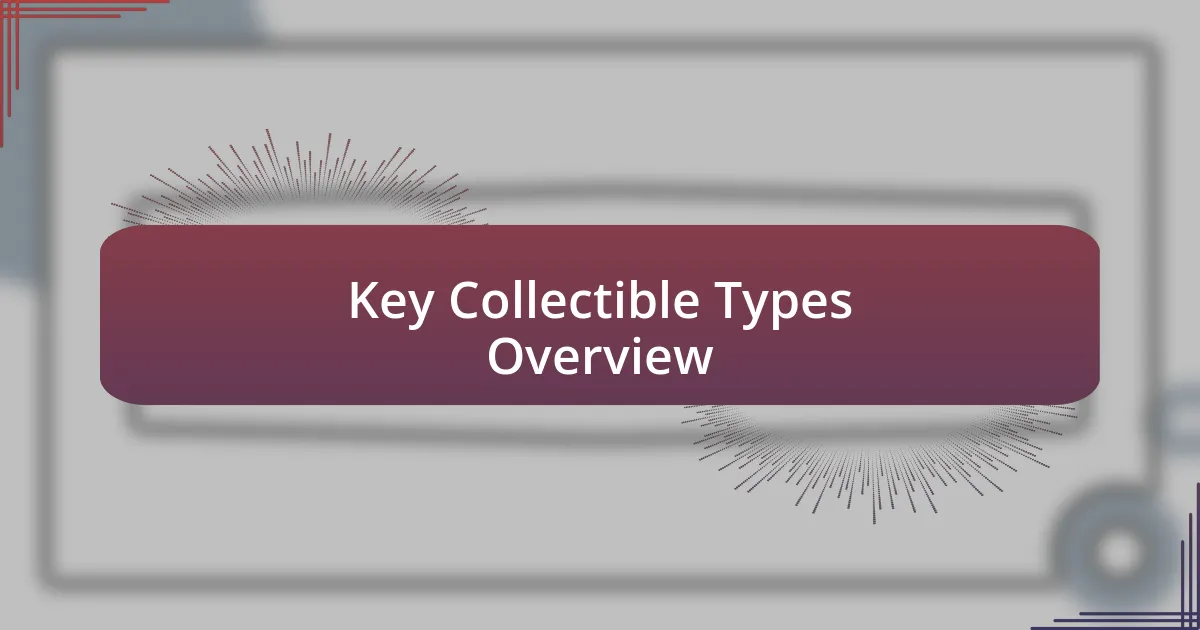
Key Collectible Types Overview
When I think about collectible fairs, I can immediately recall the diverse types of items that draw collectors in. Each category offers not just a focus for collecting, but also a unique story and community surrounding it. For instance, vintage comics often transport me back to my younger days spent in comic shops, leafing through pages filled with vibrant artwork and engaging narratives. The joy of discovering an early edition from a beloved series reminds me of how storytelling captures our imaginations.
Here are some key types of collectibles that stand out at fairs:
- Vintage Toys: Items like action figures and dolls evoke childhood memories and can often be worth a significant amount based on rarity.
- Comic Books: Ranging from superhero tales to indie gems, these offer both nostalgic value and potential investment opportunities.
- Trading Cards: Whether they’re sports or Pokémon, these cards have created their own passionate communities and can hold considerable value.
- Vinyl Records: The warmth of analog sound draws many collectors who appreciate music history and the tangible nature of records.
- coins and currency: Historical coins provide a tangible connection to the past, often revealing stories about the era they originated from.
Engaging with these various collectibles gives you a deeper appreciation for their unique histories, as well as an understanding of how collectors can bond over shared interests.
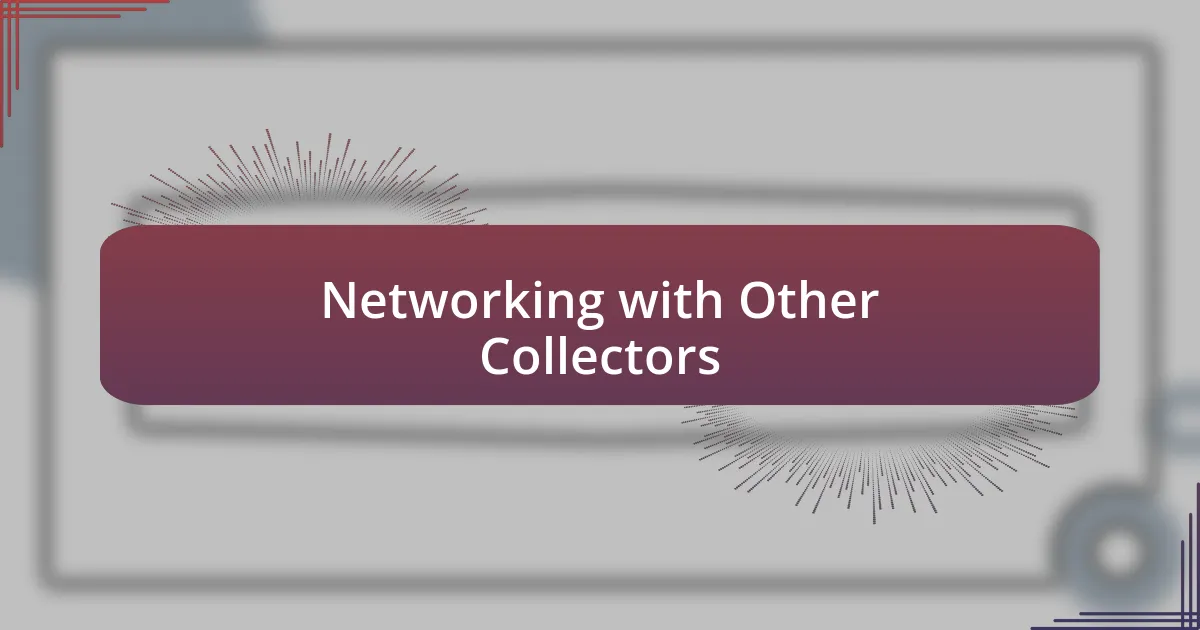
Networking with Other Collectors
Networking with other collectors at fairs opens up a treasure trove of connections and shared enthusiasm. I remember chatting with a fellow collector who had this incredible vintage toy collection. As we exchanged stories, it felt like we were reliving our childhoods, bonding over the same cherished memories of playing with those toys. It dawned on me that this sense of community is one of the most rewarding aspects of attending these events.
Through networking, I’ve uncovered hidden gems and valuable insights that shaped my collecting journey. For instance, I once learned about a local collector’s group that meets monthly. Joining that group not only provided access to exclusive deals but also cultivated friendships that turn collecting into a group adventure full of laughter and shared discoveries.
Moreover, the diversity among collectors enriches the experience. Each person brings a unique perspective based on their interests and experiences. A conversation with someone focused on vinyl records, for instance, opened my eyes to different genres and artists I had never considered. It’s this exchange of knowledge that truly enhances the collecting experience and makes it deeply fulfilling.
| Aspect | Personal Experience |
|---|---|
| Building Connections | Exchanged childhood memories over vintage toys with a fellow collector. |
| Gaining Knowledge | Learned about local collector groups, leading to exclusive deals and friendships. |
| Diverse Perspectives | Discussed vinyl records with a collector, discovering new music genres and artists. |
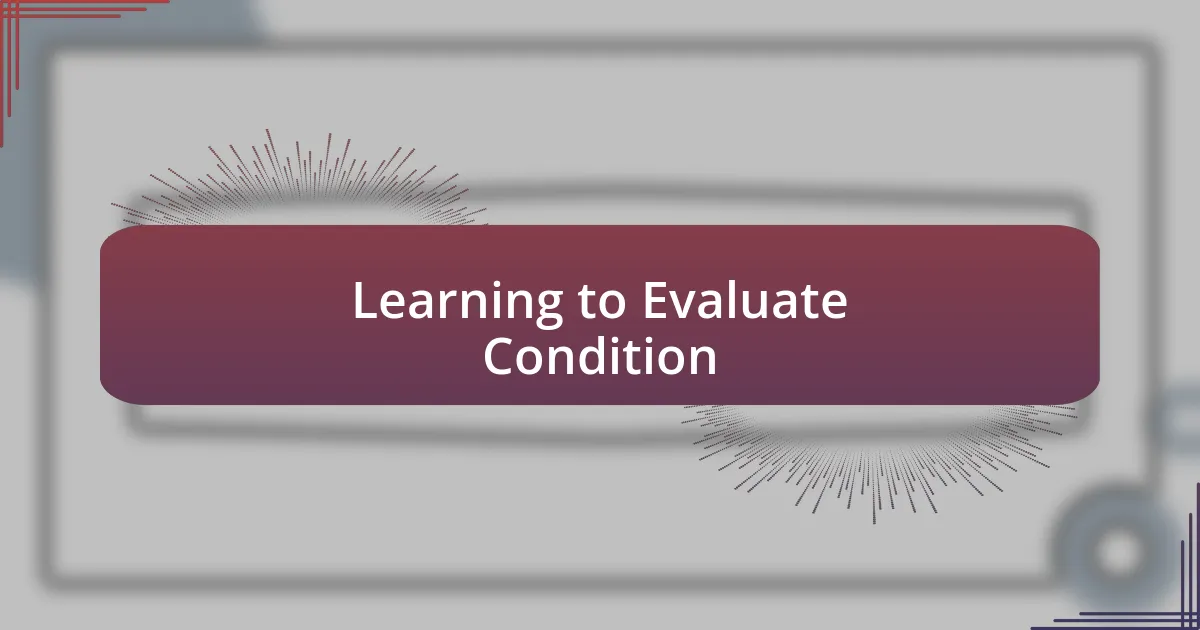
Learning to Evaluate Condition
Evaluating the condition of collectibles is an essential skill I’ve picked up over time. At my first fair, I was mesmerized by a vintage comic book; however, I quickly learned that pristine condition can heavily influence pricing. After examining it closely, I noticed a slight tear on the cover, which significantly reduced its value. This experience taught me that condition is more than just a visual assessment; it’s a nuanced exploration of every imperfection that tells its story.
I remember attending a fair where I found a rare action figure that had obviously seen better days. The seller claimed it was in “great” condition, but as I held it in my hands, I could feel the rough edges and see the fading paint. This moment made me question: how often do we overlook details in our enthusiasm for a find? I began to realize that being discerning benefits not just my collection, but also cultivates a deeper appreciation for each piece.
Over the years, I’ve developed a mental checklist when evaluating items. I assess the surface wear, check for missing parts, and even inquire about the item’s history. One day, while discussing condition with a seasoned collector, he mentioned that some imperfections add character. This perspective shifted my focus; I started to see that a well-loved item could carry just as much warmth as a mint condition gem. Isn’t that what collecting is all about?
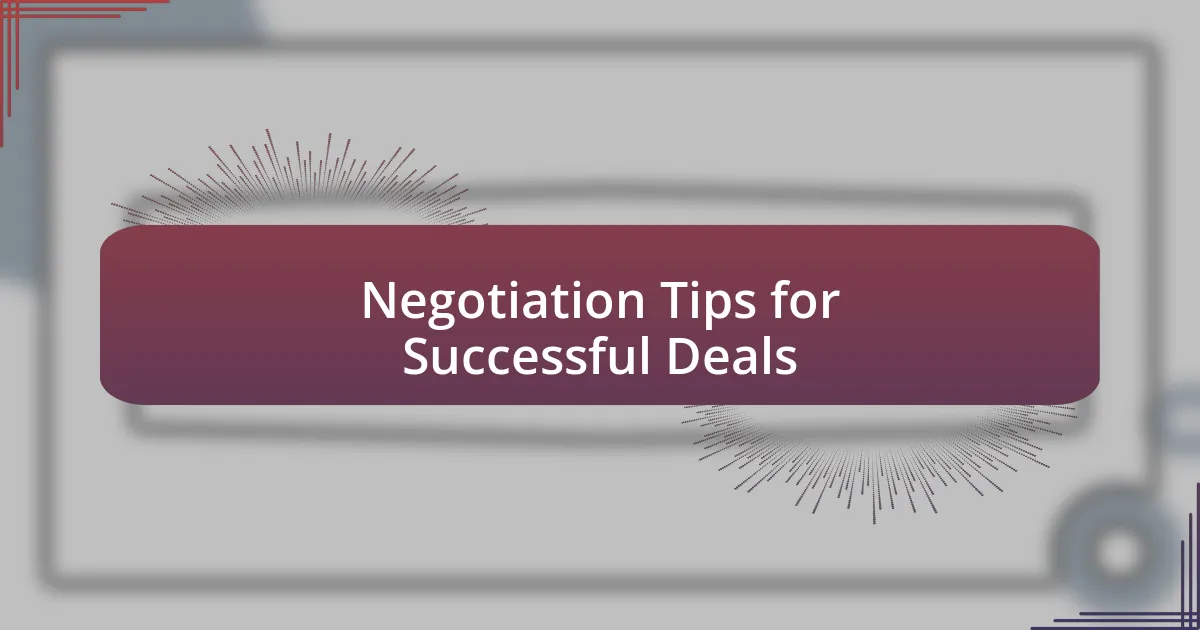
Negotiation Tips for Successful Deals
When it comes to negotiating at collectible fairs, I’ve learned that setting a clear budget beforehand is crucial. There was a moment at a recent fair when I got swept up in the excitement of a stunning vintage toy, and just like that, I was ready to spend more than I intended. It reminded me how easily emotions can blur financial boundaries. If you enter with a prepared budget, it helps you stay grounded, ensuring the thrill of the hunt doesn’t lead to regret later.
A valuable strategy I employ involves making the first offer. By starting the negotiation, I often find that sellers are more willing to meet me halfway. I recall a memorable instance when I offered significantly less for an item I adored; the seller initially hesitated, but we eventually struck a deal after discussing its condition. This gave me insight into how conversations around collectibles can be just as important as the items themselves—each exchange adds layers to the overall experience.
Finally, don’t underestimate the power of friendliness. Engaging sincerely with sellers makes negotiations feel more like a friendly chat rather than a transactional exchange. I once spent over an hour discussing a seller’s passion for collecting while sharing my enthusiasm too. Our conversation not only helped me secure a better deal but also deepened my appreciation for the community. Ultimately, who wouldn’t want to negotiate with someone they enjoy talking to?
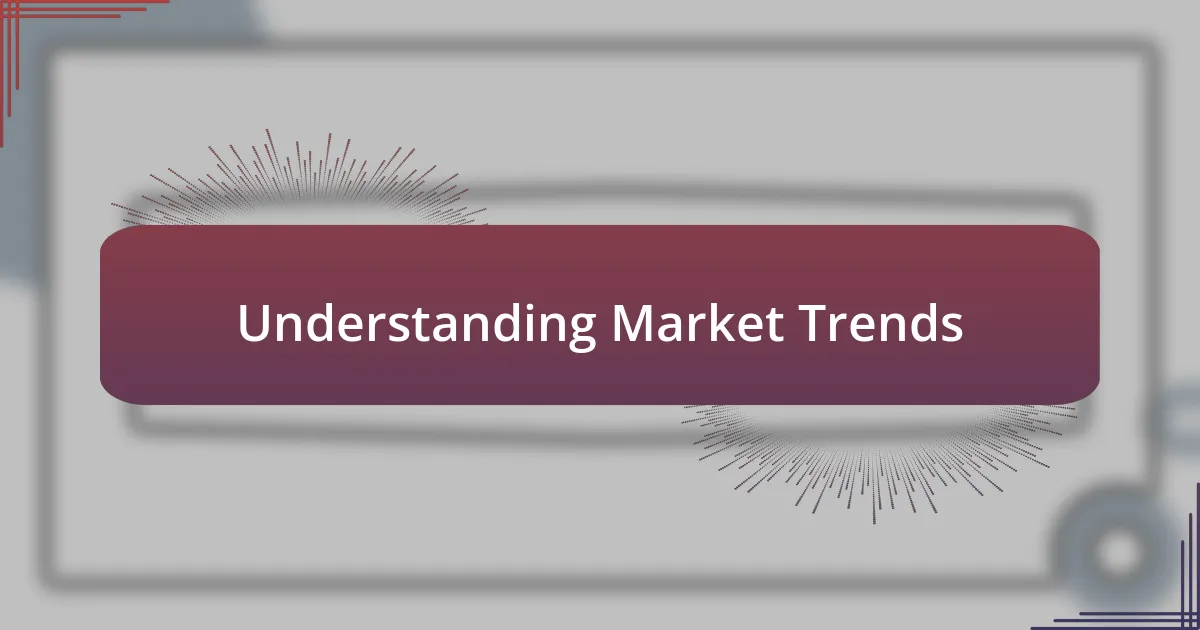
Understanding Market Trends
Understanding market trends at collectible fairs has become a fascinating learning journey for me. Observing the shifts in demand for certain items over the years, I’ve noticed that nostalgia plays a significant role. For instance, during one fair, I was astounded by how vintage comic books suddenly captured buyers’ interests again, spurred by recent film adaptations. It made me wonder how pop culture influences what we collect and why some items surge in value while others fade away.
During another visit, I witnessed firsthand how the uniqueness of an item can dictate its market appeal. I remember coming across a rare action figure that collectors were eager to get their hands on, while more common items sat unsold. This discrepancy highlighted for me the importance of rarity and condition—not just the looks but the overall story behind the item. Don’t you think it’s intriguing how the narrative around collectibles can elevate their worth amid an evolving market?
Engaging with fellow collectors and sellers also enriches my understanding of market dynamics. I recall chatting with a seller who specialized in vintage vinyl records; he shared insights into current trends and what buyers were hunting for. He emphasized the influence of social media on these trends, particularly how online platforms have broadened our awareness of emerging collectibles. This exchange opened my eyes to the interconnectedness of our community, leaving me curious about how our preferences might continue to evolve.
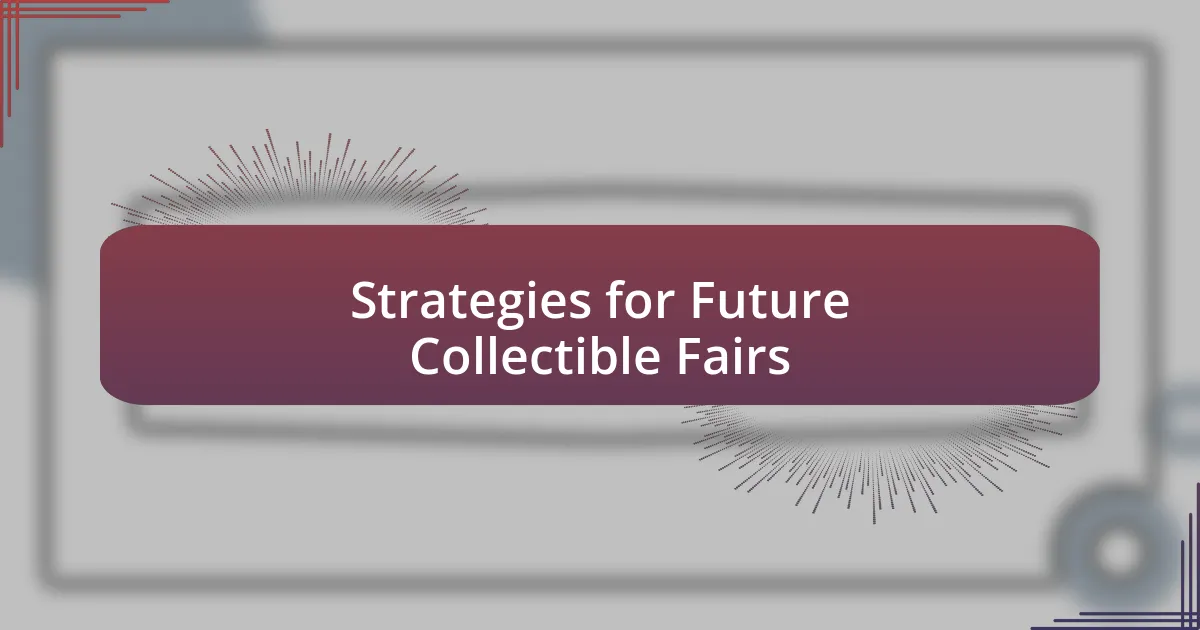
Strategies for Future Collectible Fairs
One effective strategy for future collectible fairs is to diversify the types of items showcased. When I attended a fair that included everything from vintage toys to contemporary art, I was struck by how this variety attracted a broader audience. It made me think about how expanding the range of collectibles not only appeals to different interests but also fosters unexpected conversations between collectors of varied genres—wouldn’t that richness elevate the community experience?
Another approach involves leveraging technology to enhance engagement. At one event, a seller used an app to track buyer preferences and gather real-time feedback, allowing for immediate adjustments in their approach. It struck me that integrating such tools could significantly improve sales strategies and customer satisfaction. I wonder if more sellers will start to embrace this trend, recognizing how data can personalize their selling experience more than ever before.
Lastly, fostering a sense of community at fairs can transform the atmosphere entirely. I remember how a simple panel discussion at one event sparked lively debates and allowed collectors to share their stories. This interaction created a welcoming environment where people felt encouraged to connect and learn from one another. Could cultivating such community spaces be the key to making future fairs more than just marketplaces, but rather hubs of collaboration and shared passion?

